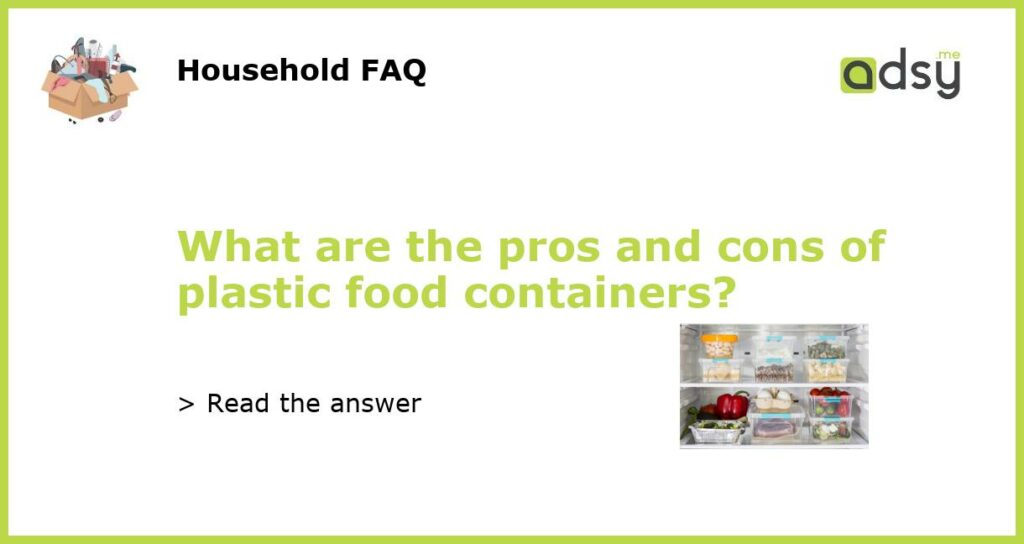Pros and Cons of Plastic Food Containers
Food containers are a necessity for many individuals who pack their lunches or store leftovers. One of the most popular materials for these containers is plastic. While plastic food containers offer several benefits, they also come with some drawbacks. In this article, we will discuss the pros and cons of plastic food containers.
Pros of Plastic Food Containers
Plastic food containers are popular for several reasons:
Convenience
Plastic food containers are lightweight, making them ideal for carrying around. They are ideal for outdoor activities and picnics. They are also easy to clean and suitable for dishwasher use.
Affordability
Plastic food containers are less expensive than other materials, such as stainless steel and glass. They can be found at a variety of retailers in many sizes and shapes.
Portion Control
Plastic food containers can help you control portion sizes, which can be helpful in maintaining a healthy diet. Many plastic food containers come with divided compartments to separate different foods.
Cons of Plastic Food Containers
While plastic food containers offer convenience and affordability, there are also some drawbacks:
Not Eco-Friendly
Plastic food containers are not eco-friendly. They are made from petroleum-based materials and are not biodegradable. This means that they can last hundreds of years in a landfill and harm wildlife if not disposed of properly.
Potential Health Risks
There is some concern about the use of plastic food containers as certain types of plastic can release harmful chemicals when heated. For example, bisphenol A (BPA) is a chemical used to make plastics, including food containers. BPA can seep into food and beverages and has been linked to developmental problems in children and reproductive issues in adults.
Not Suitable for All Foods
Plastic food containers are not suitable for all foods. Some foods, such as hot soup or acidic foods, can cause the plastic to break down and release chemicals into the food. Also, microwaving plastic food containers can release harmful chemicals into the food.
Short Lifespan
Plastic food containers have a shorter lifespan than other materials such as stainless steel or glass. Over time, they can crack or become discolored, and they may need to be replaced more often.
Plastic food containers have their advantages and disadvantages, and it’s up to you to decide whether they are right for your needs. If you choose to use plastic food containers, be sure to take care of them properly, dispose of them responsibly, and consider replacing them if they become damaged or discolored.






![[10-Pack]Glass Meal Prep Containers -MCIRCO Food Storage Containers with Lifetime Lasting Snap Locking Lids, Airtight Lunch Containers, Microwave, Oven, Freezer and Dishwasher](https://m.media-amazon.com/images/I/41ZdkMs1ciL.jpg)